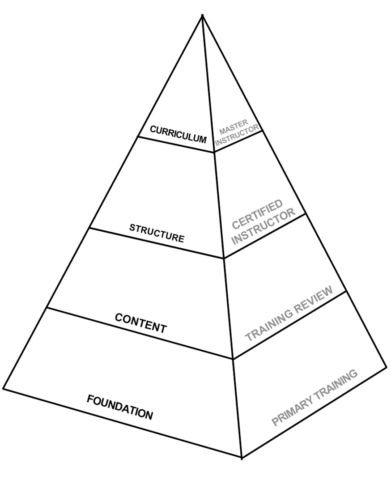Back in 2012, I was contacted by a Federal Government agency, whose privacy I will keep from this article. After years of being taught a complex defensive training program, they brought me into their Chicago offices, and sat me down in front of a 200 page manual and 200 page stack of power point slides.
Lucky for me, the acting head of this organization was being tapped by the President to take over the head role permanently, but in the previous year he had ended up at one of my self-defense seminars. Liking what he learned, and how I taught, I was brought in for a meeting and then an interview to completely overhaul the defensive tactics program.
To my amazement and excitement, eight years later I after relocating across the country, and had a member of that same agency brought in his family to my new martial arts school. After learning who I was, the next class, he brought in a tattered copy of the manual I ended up writing and training their officers in, as they still were using it.
I created this program out of a need to organize the most important information that those agents need to know when faced with a threatening situation. Being a self-defense student and now a defensive tactics instructor, has filled my mind with so many techniques, concepts, principals, ideas, drills, and training methods. It is not so much that martial arts is made confusing with all of this information, but the need for instructors to relay all of this information when specific requirements are needed, is what causes the confusion.
My first tool to overcome this obstacle was to write this program’s manual in a relaxed and informal format. For instance, you’ll see that I wrote this manual mainly in the first person, just as if you and I were having a conversation about the topics. I attempted to cut out as much of the defensive jargon as possible, and use regular terms wherever I could.
However, the main challenge comes in when compiling all of the information a martial artist or practitioner knows. We’re talking about raw data here. How many ways can you respond to a punch, how many different disarms do you know, name the numerous joint manipulations, etc. Before you know it, the practitioner is swimming in a sea of techniques, moves and piles upon piles of information. In short, it becomes information overload.
“Knowing” a lot of information is not the culprit necessarily. The challenge in organizing is functionalizing the knowledge into usable information (tactics). As instructors, so much emphasis is knowing “more”, that it becomes the status quo, but the status level, where the more one teaches, the more they are seen as being a great teacher. They end up “throwing up” as much information as they can on the student.
Here is where the problem lies. Rarely do people have the time or energy (much less interest) to consume all of the knowledge the instructor has to give. As a result, the student ends up with two scenarios:
First they get overwhelmed and frustrated with the information, resulting in them giving up on trying to retain anything. Secondly, they end up really trying to assimilate the information, but get into the “paralysis of analysis”. This is where the student has so many options, they literally freeze up, overanalyzing all of the different moves, techniques, etc.
Either way the student (or agent in this case) is left ill equipped for any situation which may arise. They don’t have time to train everything they’ve learned, and often the things they do retain overwhelm them in training, or worse, out in the field.
The program I created consists of four parts, and I have labeled them on the levels of a pyramid or PRMD to show how one part acts as the groundwork for the next, higher level part. “PRMD” is the acronym used for Progressive Response Matrix of Defense, and is used as a visual for both instructors and agents. You’ll see these pyramids throughout this manual to illustrate the same lesson: A base is first needed to build the skills to reach the potential of the next level. The parts of this manual follow the same configuration:
Foundation explains the founding tested principals and formulas of this defensive tactics program. Content describes the categories and modules of defense covered in this program. Thirdly, structure covers how the information is arranged and presented to both trainers and agents. Lastly, curriculum teaches the course lessons, objectives and training sessions in detail.
By laying out the steps and levels this way, not only gave common sense to the program, but provided the “why” of what they were learning. When I explain these parts to my civilian students, it makes the same kind of common sense, and gives them a basis of why they are learning whatever I’m teaching. This accounts for faster learning, and massively better retention and recall. Therefore, make sure, whatever you are learning, you have a “why” behind the “what”.
